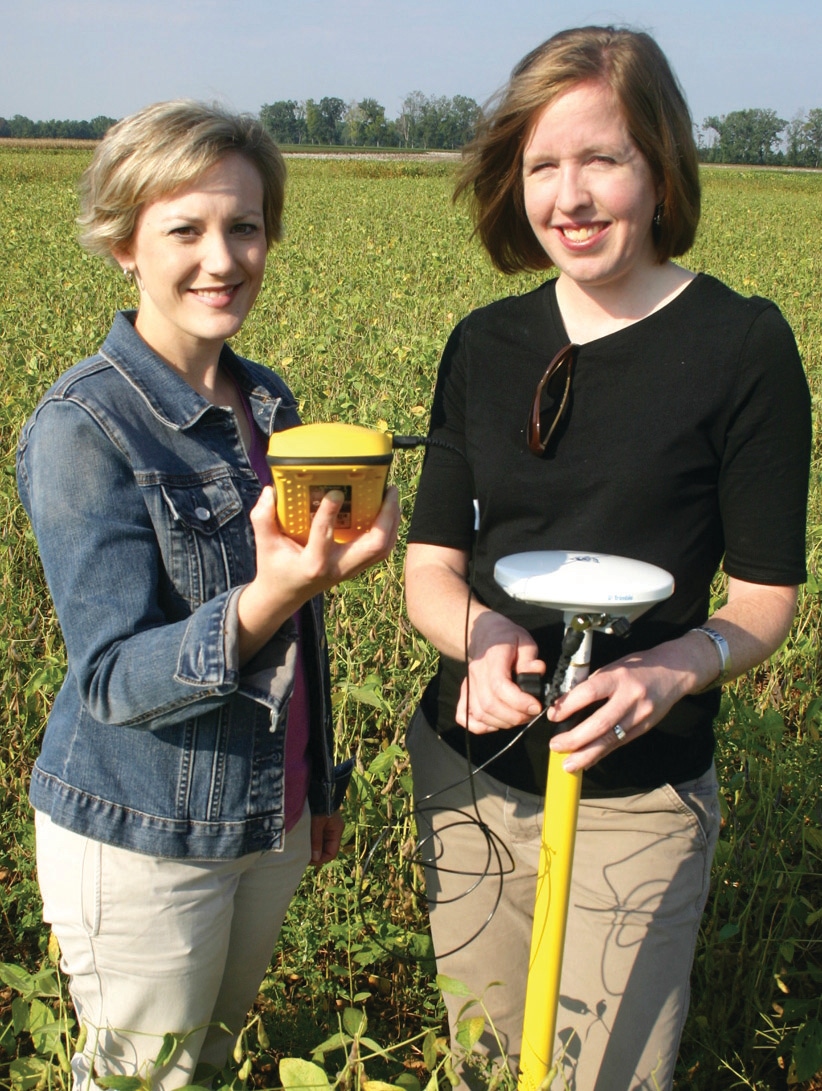
Yet, as Winstead and a growing number of Extension educators have noted, the old information order once dominated by Cooperative Extension professionals — one in which face-to-face encounters and traditional media, such as newspapers, printed publications and broadcast media were primary means of information delivery — is quickly being overtaken by virtual sources of knowledge in the form of search engines, online communities and other emerging technologies.
August 31, 2010

Like Gretel of Brothers Grimm fame, Amy Winstead has been carefully, diligently dropping bread crumbs in cyberspace, not in the hope of finding her way back to some place, but of directing more and more of her clients forward to a new place.
Her clients are farmers. The new place is precision farming — a state of mind rather than an actual physical place. The global positioning system technology associated with precision farming practices has enabled producers to plant, spray and harvest their crops with virtual pin-point accuracy. The result is dramatic cost savings for many as well as positive effects on the environment.
The bread crumbs in this case are blogs, tweets, and Facebook postings.
For a while, Winstead, an Alabama Cooperative Extension System regional agent specializing in precision agriculture, wondered if all her efforts were being ignored or crowded out by similar cyberspatial bread crumbs left by others.
The warm response she got from participants at the recent International Precision Agriculture Conference in Denver allayed her concerns. Aspiring and practicing precision farmers not only were noticing and consuming her bread crumbs, but also sharing them with others.
“We got lots of feedback about all of our social media efforts — lots of people beyond university researchers and Extension professionals,” Winstead says.
Winstead is one of a growing number of Extension professionals who are adopting social media to reach their clientele.
As she sees it, social media represent the next giant leap of Cooperative Extension outreach methods.
From the early- to mid-20th century, Cooperative Extension was recognized as one of the planet’s premiere knowledge providers. Its outreach methods were adopted and tailored to local conditions by governments and educational institutions throughout the world.
Yet, as Winstead and a growing number of Extension educators have noted, the old information order once dominated by Cooperative Extension professionals — one in which face-to-face encounters and traditional media, such as newspapers, printed publications and broadcast media were primary means of information delivery — is quickly being overtaken by virtual sources of knowledge in the form of search engines, online communities and other emerging technologies.
In his 2005 <i>New York Times</i> bestseller, Thomas Friedman adopted a metaphor to underscore what was happening: The Internet has created a flat world, one in which knowledge providers such as Winstead, no matter their location, can compete equally with similar providers across the planet.
Winstead has seen this phenomenon at work in her own profession.
Up to now, she says agricultural vendors, rather than educators, have been the dominant players on the social media landscape. Winstead was determined to change that dynamic.
She, Shannon Norwood, at the time a precision farming agent who has since taken a job in the private sector, and John Fulton, an Auburn University assistant professor of biosystems engineering, launched the Alabama Precision Ag Team Web site, early in 2009. A blog as well as Facebook and Twitter sites soon followed.
Winstead collaborates with Fulton, Daniel Mullinex, a research engineer who works with Fulton, and other members of the Alabama Extension Precision Agriculture team to produce blogs, Facebook statuses and tweets.
“What we wanted was a social media presence that was highly intuitive and accessible,” Winstead says.
She and others also use these media to stress the ways precision farming practices help rather than hinder environmental stewardship.
“One thing I’ve learned in the course of working with non-farm groups is that they’re open to understanding farming and how it works,” she says. “They just need to be given new insights and a means of having their questions answered.”
Aside from reaching non-farm audiences, Winstead says her social media presence also works to help farmers understand precision-farming applications within a wider context — something many of them related to her at the conference.
“There is plenty of useful vendor information out there, but its hard finding research-based information out there that enables farmers to wade all this information and to understand what will work best for them,” Winstead says.
“Helping farmers put information into context is one of the things we’ve always one in Extension, and social media are helping us do this far more cost-efficiently and effectively.”
Winstead says the sites have also drawn the attention of reporters from print and broadcast media alike who want to understand the role new technologies, such as precision farming, are playing in rendering farming practices more environmentally friendly.
She doesn’t see social media replacing face-to-face contacts. On the contrary, she says, these practices will enhance these traditional Extension roles. Even so, Winstead says Extension success in the future will lie in how it balances the older ways with the new.
“We’re definitely going to have to use the new media,” she says. “Our clientele is evolving, and we’re going to have to evolve with it.”
You May Also Like



